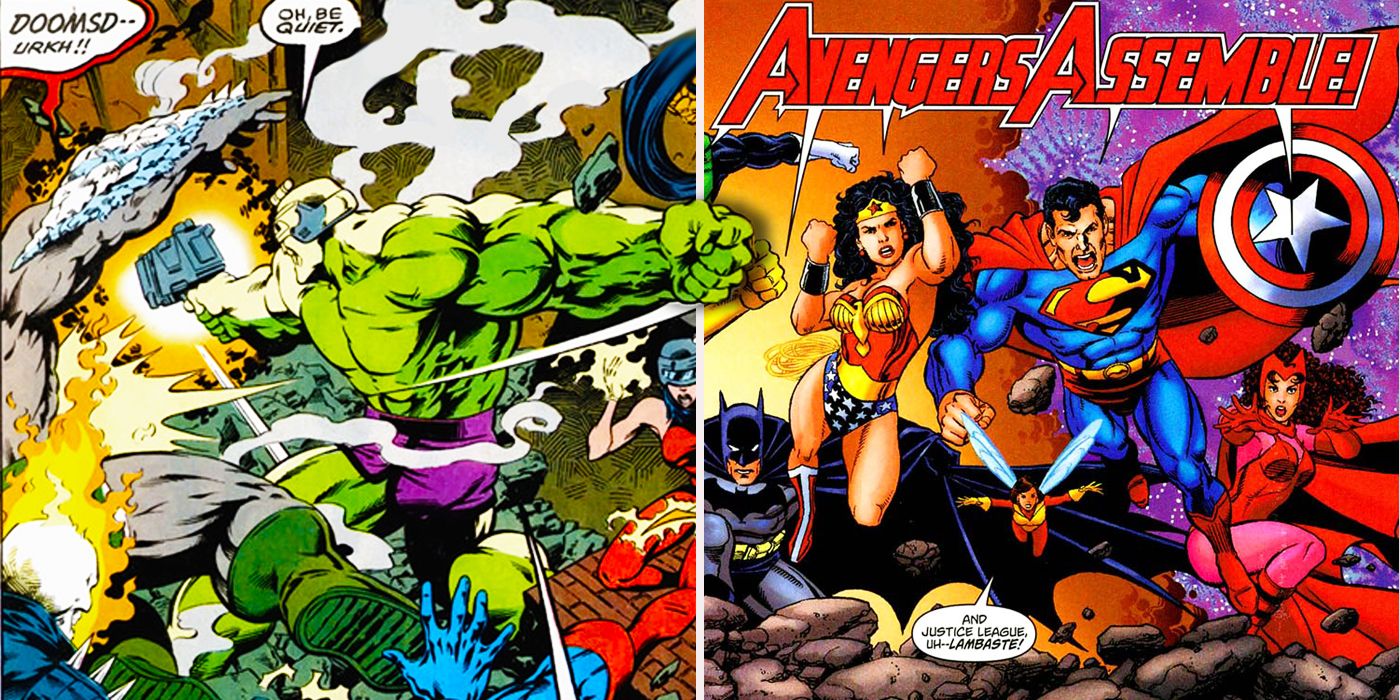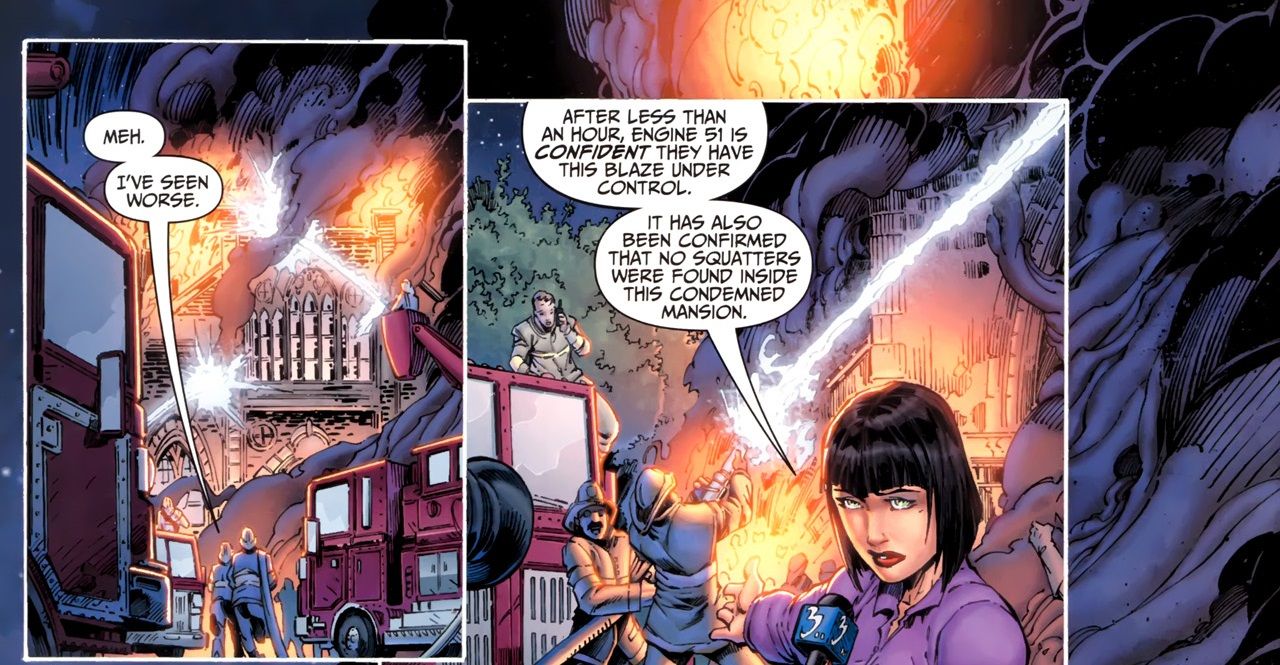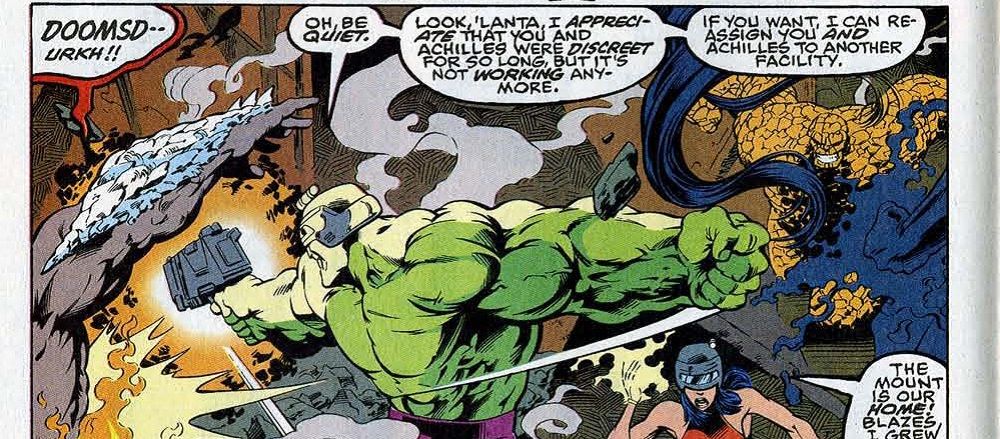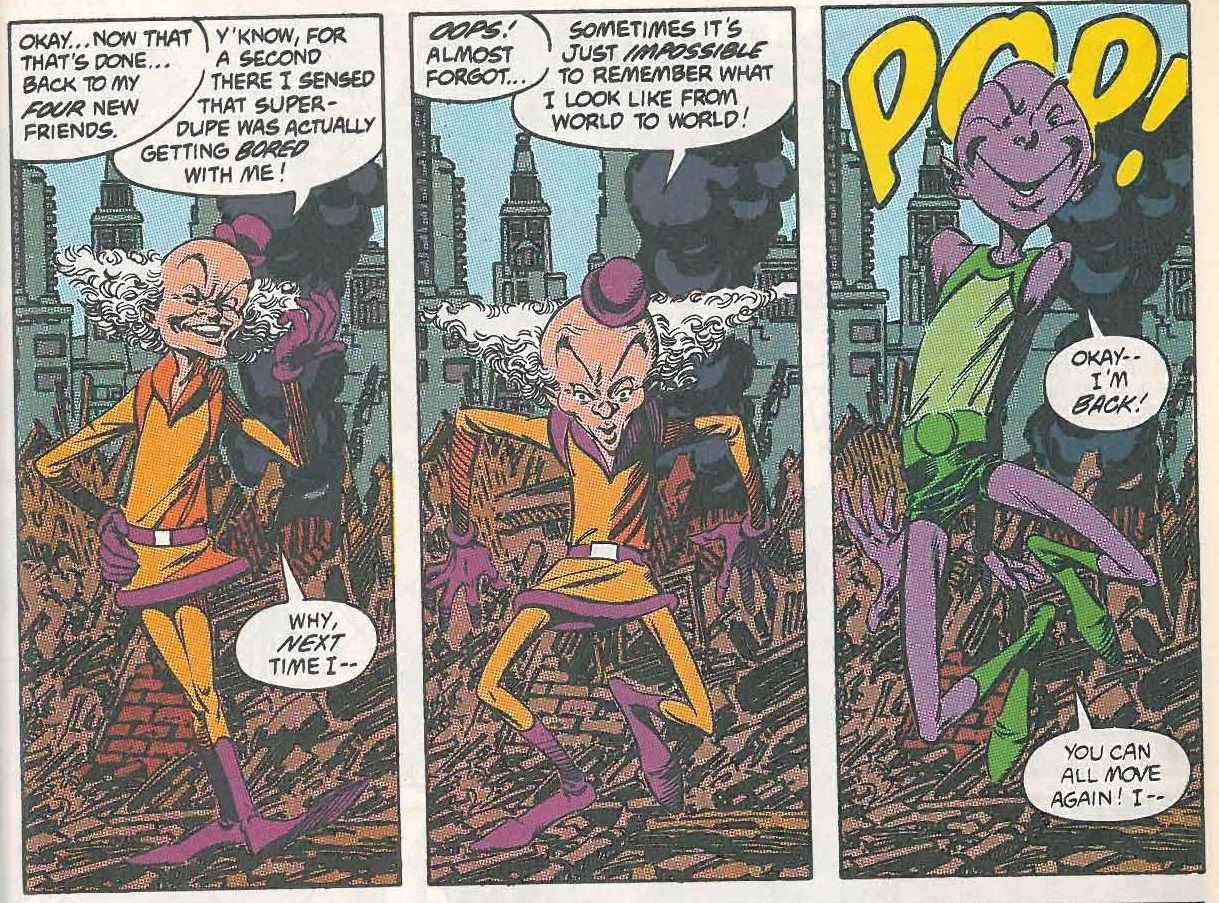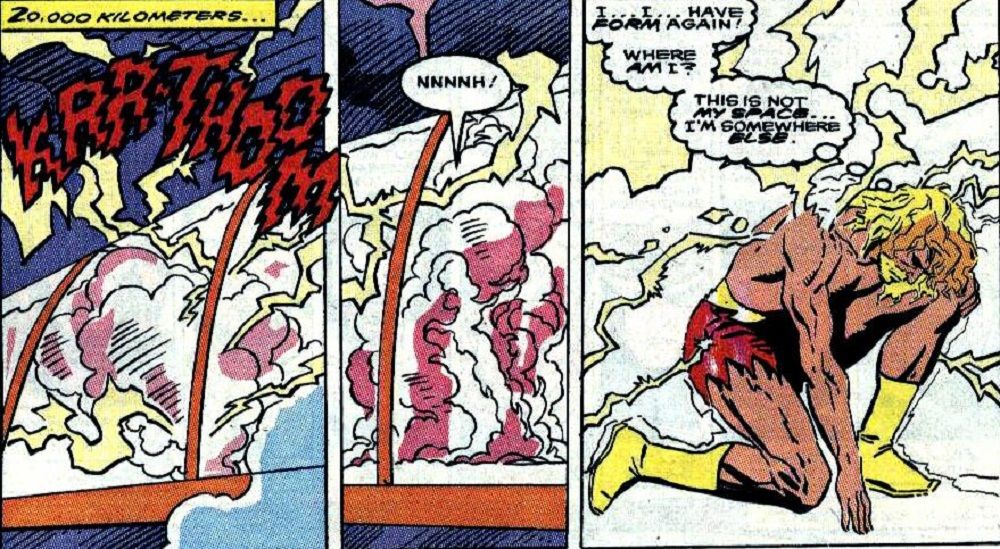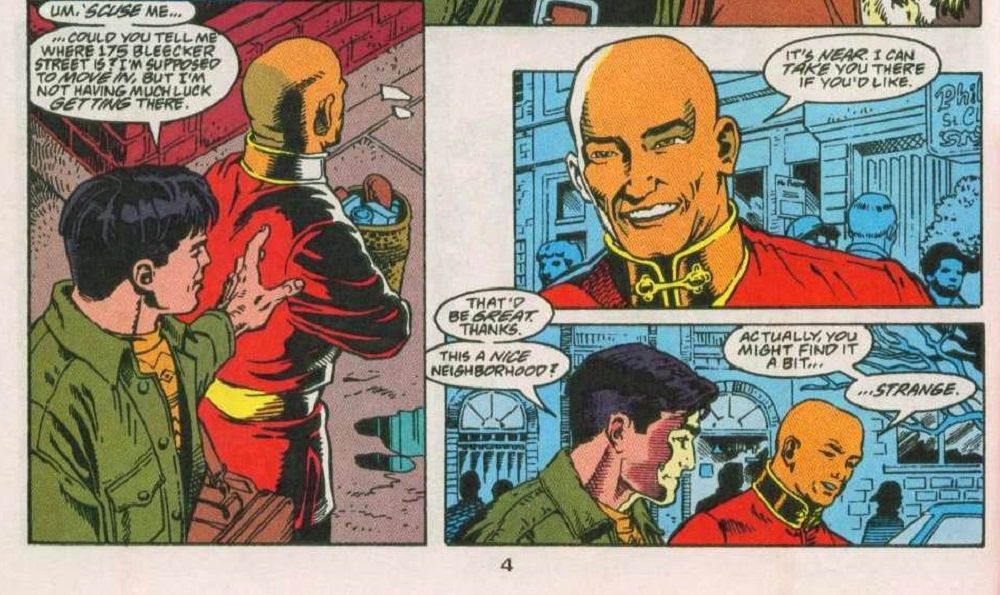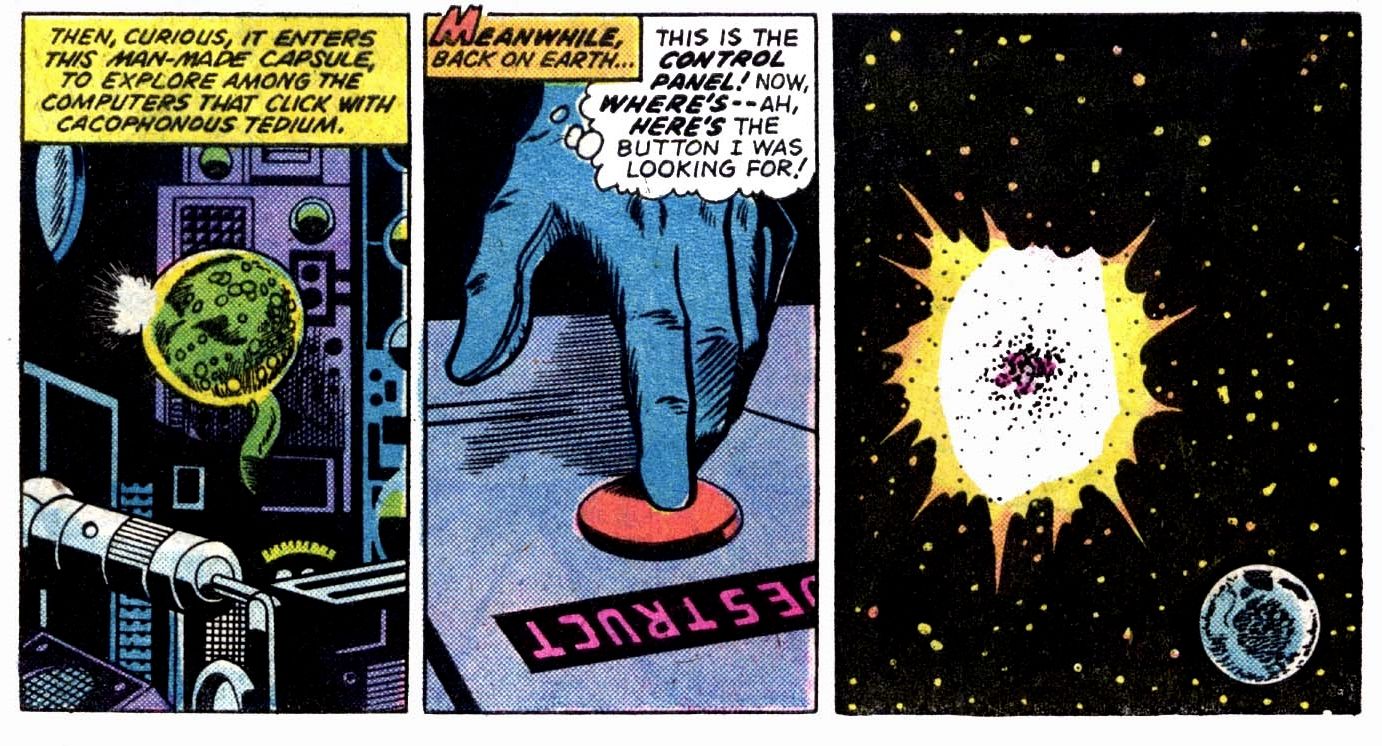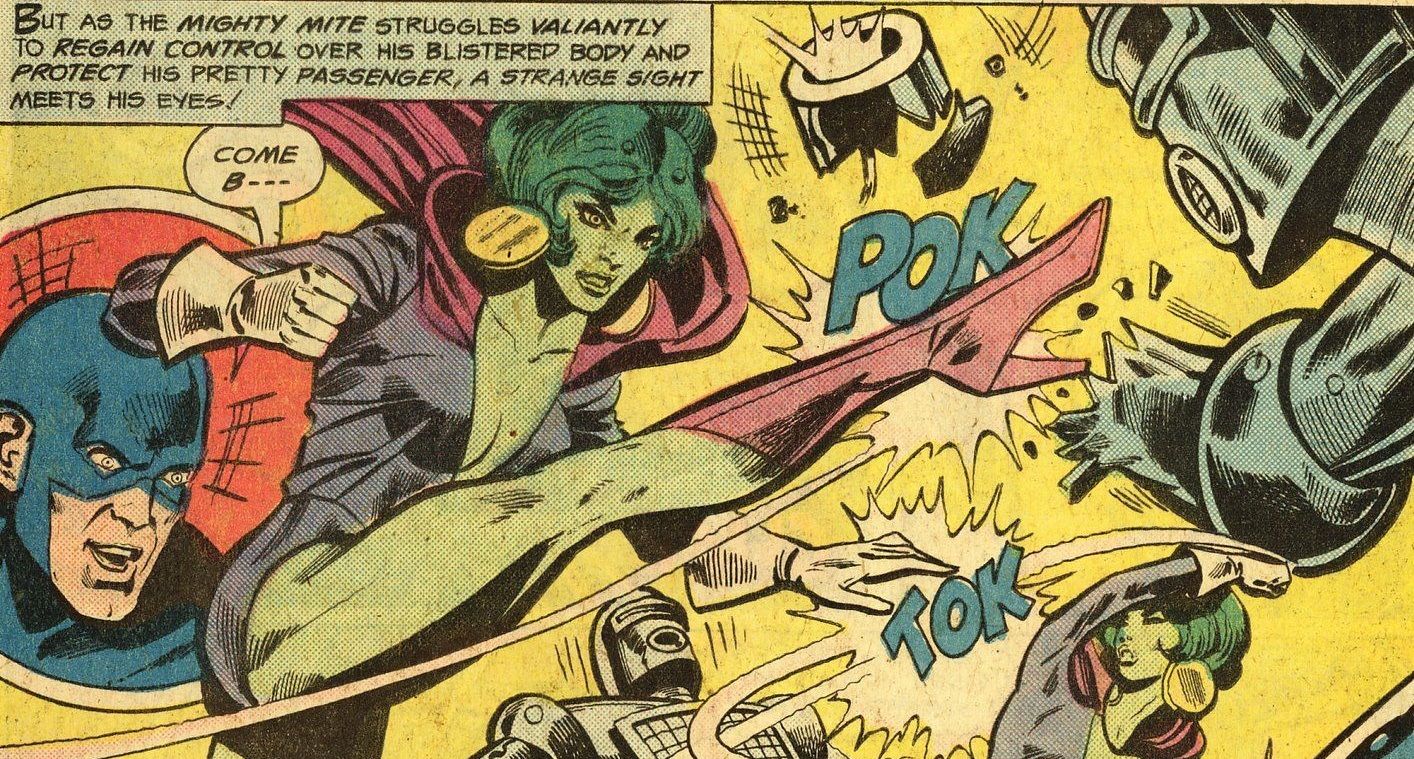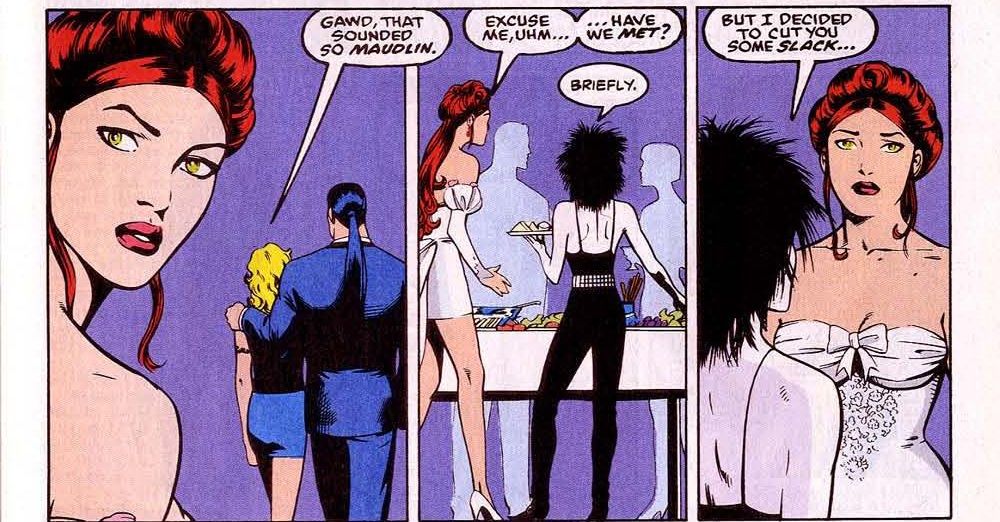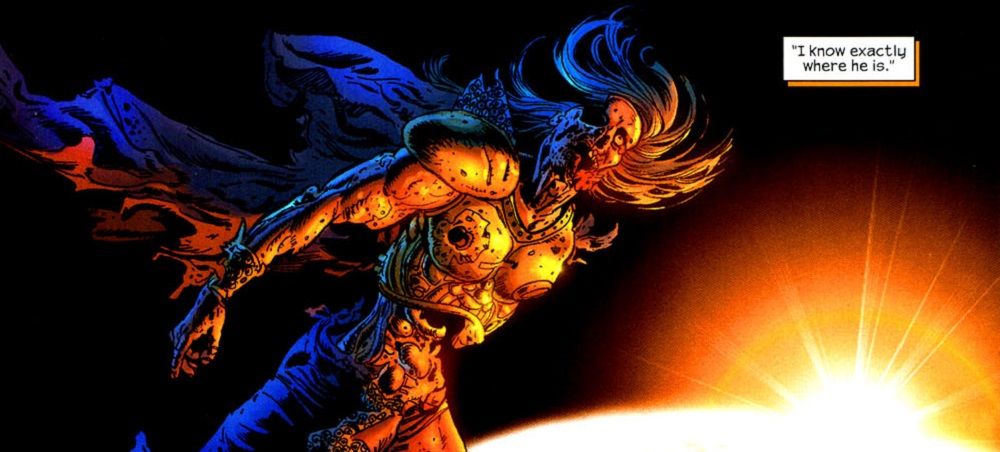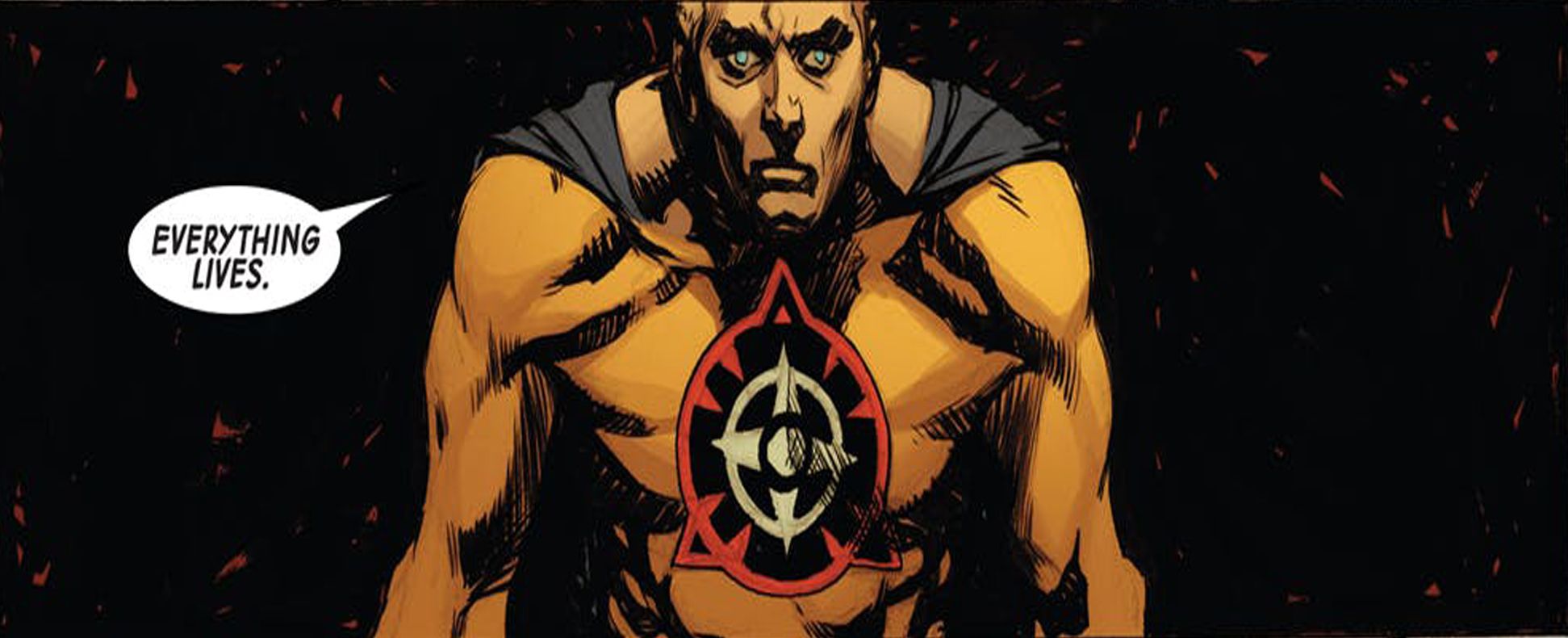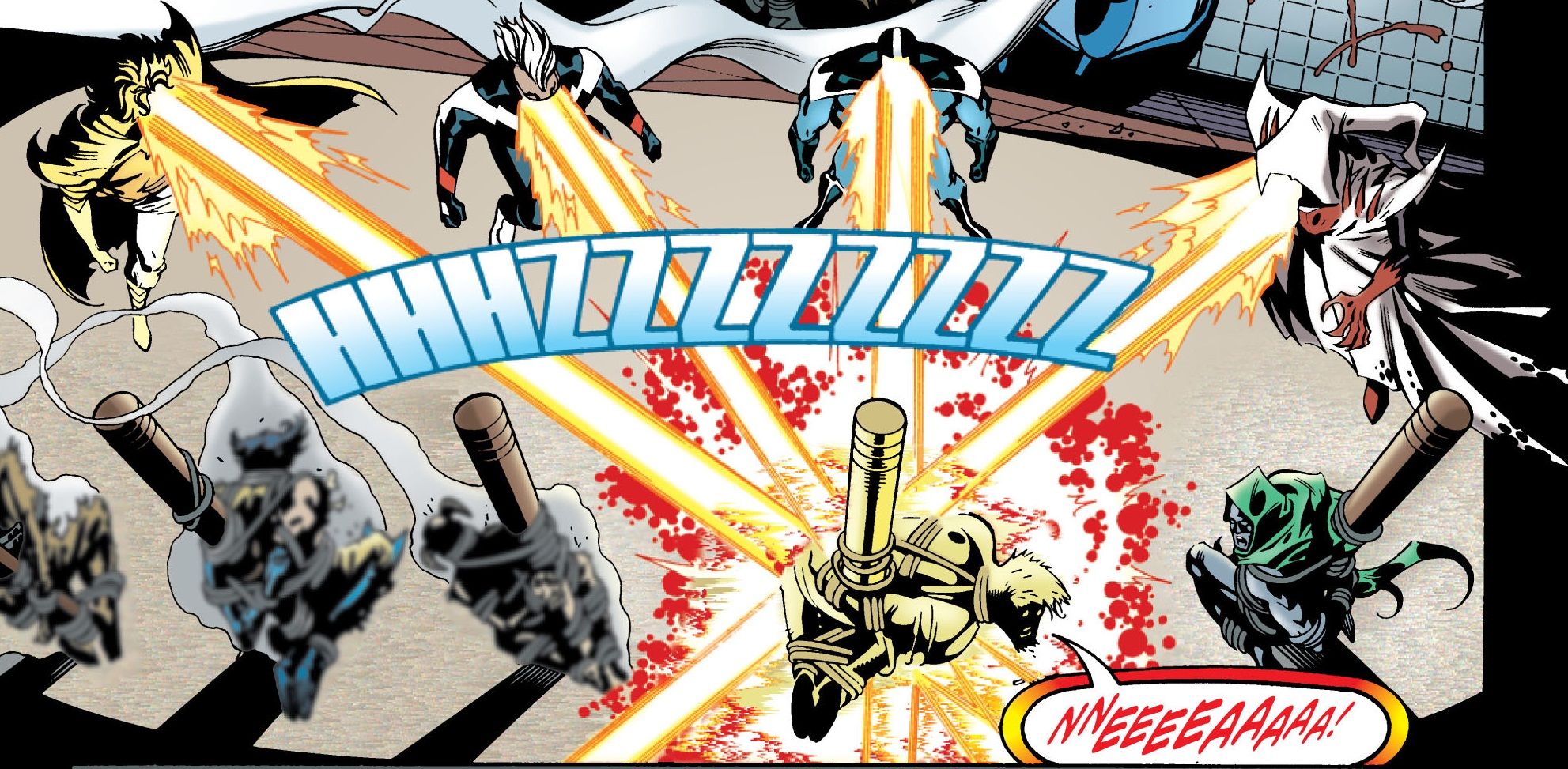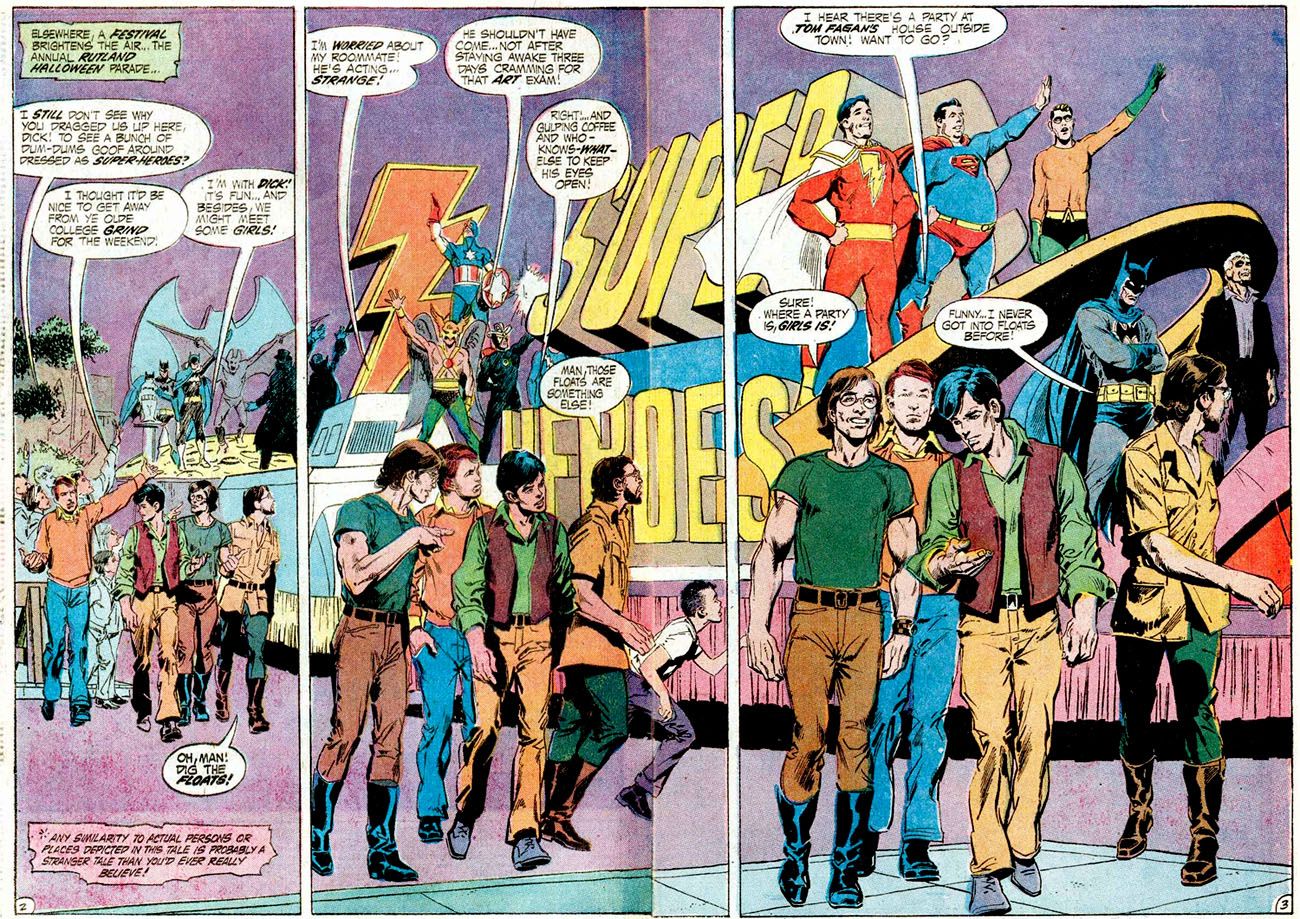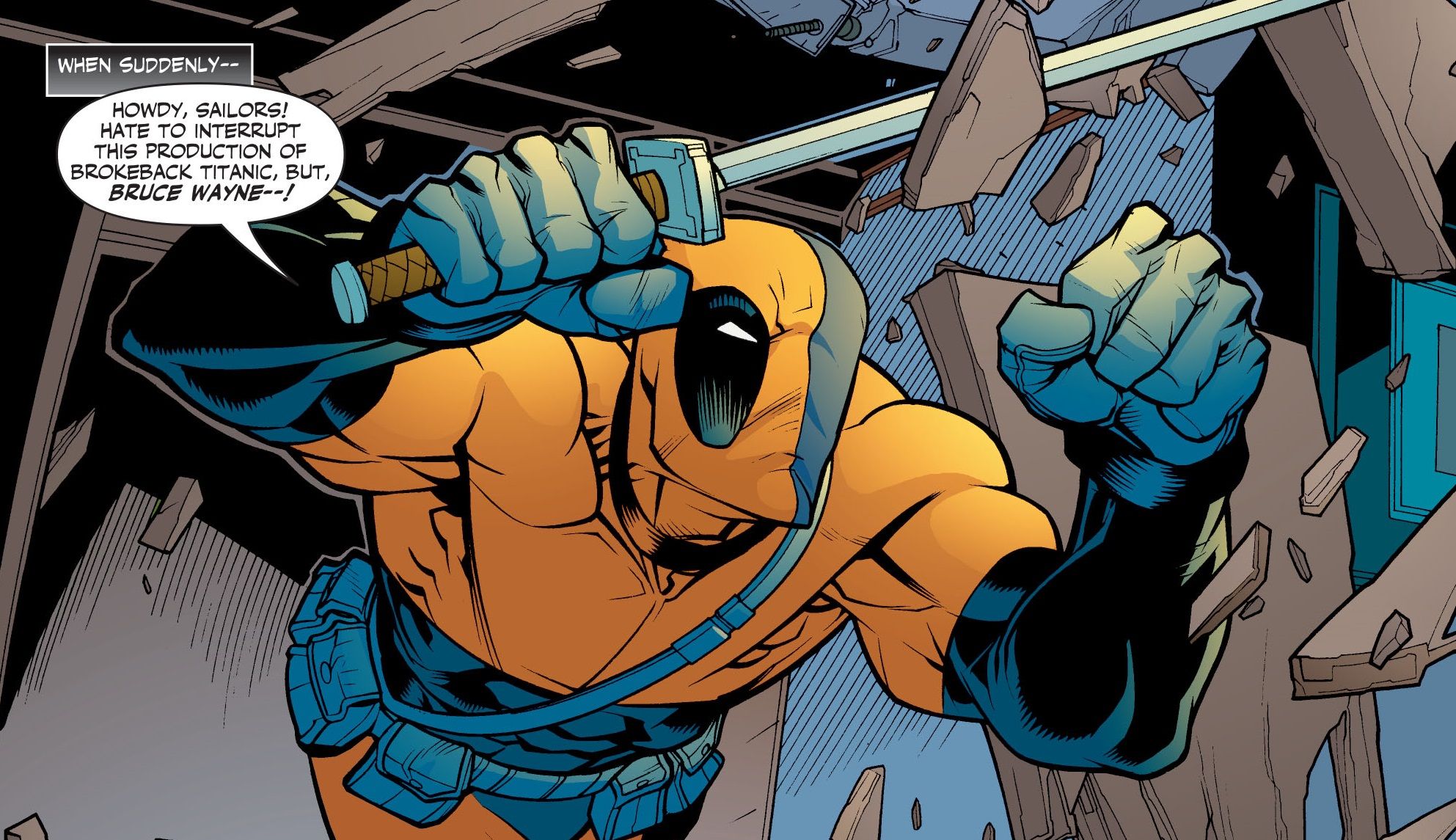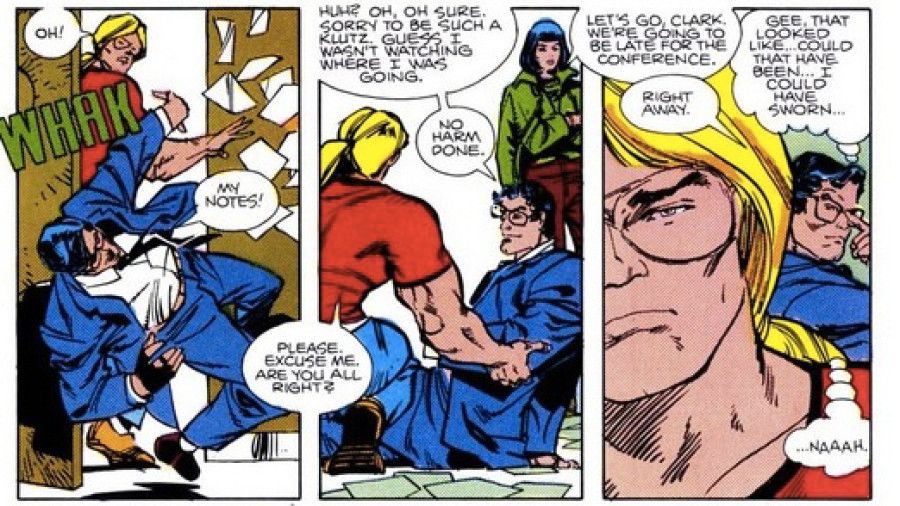Marvel and DC have long had a friendly rivalry, dating back to when Marvel first started up as a company. Writers and artists change over frequently, and they're always ready to trade a few barbs with their friends and colleagues on the other side. Sometimes, more than just a creator switches over. Through DC and Marvel's history, characters from one publisher have a habit of popping up in the other. Usually it's just a cameo, but sometimes it will be a blatant knockoff as either a joke or to make a point.
Some writers use these unofficial crossovers to highlight the differences between Marvel and DC, while others just like to sneak in a little reference to the Distinguished Competition. Other writers even carry over characters they were writing at one company, give them a new coat of paint, and just keep on writing them at the other company. A group of writers can even collaborate on an unofficial crossover, carrying a storyline between their comics at the two different companies. This list goes into all the cheeky little references, blatant and not so blatant knockoffs, and other unofficial crossovers between the Big 2, plus one official crossover to round things out.
15 THE TEEN TITANS BURN DOWN THE XAVIER INSTITUTE
Scott Lobdell is perhaps one of the more famous X-Men writers, responsible for several well-known storylines, including "Age of Apocalpse" and "Onslaught." So naturally, when DC was putting together its massive 2011 reboot, the New 52, they gave Lobdell a call to helm Teen Titans. Unfortunately for him (and Teen Titans readers), his run did not go particularly well.
But maybe it was foretold by the first issue. In it, things start off with a literal bang, as a stately mansion in Westchester burns to the ground. More astute readers were able to recognize it as the iconic mansion belonging to Charles Xavier, home base of the X-Men. While firefighters have the blaze relatively contained, a headstrong Kid Flash rushes in, causing a backdraft and destroying the mansion entirely, a bit of a nod to Lobdell leaving behind his X-Men past and looking ahead to the future.
14 HULK PUNCHES OUT DOOMSDAY
In 1992, one of the most ground-shaking comics events happened: Superman died. Killed in battle with the immensely powerful villain Doomsday, Death of Superman is largely credited with kick-starting the speculator bubble that would lead to the industry crash in 1997. While the long-term effects of the story wouldn't be felt for a while, Doomsday stuck in the craw of more than a few creators.
In 1994, Hulk was smart. Basically, it was the mind of Bruce Banner in the body of the Hulk. And as a smart Hulk, he created a virtual reality deck, not unlike the Star Trek holodeck, with some eerily predictive virtual reality goggles. In the virtual reality training session, he clocks a (faceless) enemy with an arm that looks an awful lot like Doomsday's. Also the guy yells out "DOOMSD--urkh!!" so it's pretty safe to assume.
13 THE IMPOSSIBLE MAN=MR. MXYZPTLK
Marvel's The Impossible Man and DC's Mr. Mxyzptlk are basically the same character. Or rather, the Impossible Man, created in 1963, is a rip-off of Mr. Mxyzptlk, created in 1944. Either way, they are both extradimensional imps with god-like reality warping powers, less interested in battling heroes than playing around with them. For Mxyzptlk, it's Superman; for Impossible Man, it's usually the Fantastic Four.
Of course, we at CBR were not the only ones to notice these similarities. In Superman volume 2 #50, Mxyzptlk takes a brief break from messing with Superman to pop into another universe, before shapeshifting into a very Impossible Man-looking form, and begins to do battle with a group of four superheroes wearing blue. The two characters would later get an official crossover in Superman/Silver Surfer, which de-confirmed the small Easter Egg that they were the same person.
12 THE FLASH BEATS EVERY SPEEDSTER AT MARVEL
In 1985, DC published one of the defining works of modern comics: Crisis on Infinite Earths. A massive crossover event covering the entire DC Universe, it saw the villainous Anti-Monitor attempting to devour the multiverse. The Flash, Barry Allen, sacrificed himself to stop the Anti-Monitor's plan to destroy the remaining five Earths. Or maybe not...
Five years later, one of Marvel's Elders of the Universe, the Runner, gathered every speedster in the Marvel Universe for a great Race. One of the competitors, an amnesiac blond man wearing a tattered red and yellow costume, breaks through dimensional barriers to join the race. He wins, and is deemed the fastest man alive. When asked his name, he says he remembers it sounded a bit like "Buried Alien."
11 WONG SHOWS KYLE RAYNER AROUND GREENWICH VILLAGE
In 1993, Hal Jordan, the Green Lantern, became the villainous Parallax, and wiped on the Green Lantern Corps. His successor, Kyle Rayner, became the last of the Green Lanterns, and did his best to become a true hero to live up to the name. Kyle, an artist, would of course be right at home in the hip neighborhoods of Manhattan.
So, after the harrowing death of his girlfriend (the infamous fridging), he moves to 175 Bleecker Street in Greenwich Village. Readers who are particularly fastidious about their trivia will notice that that is right next door to another famous superhero. Yes, that's right, Doctor Strange's Sanctum Sanctorum is perched right at 177 Bleecker Street. And of course, Rayner bumps right into Strange's manservant Wong, who shows him around the neighborhood.
10 NAMOR FINISHES AN AQUAMAN PLOT
This is one of the stranger crossovers, and in fact half of it lays the groundwork for one of the very first. In 1971, a writer named Steve Skeates was writing Aquaman. In Aquaman #56, Skeates writes the story of new superhero, Crusader. Now, Crusader has bad eyesight, so he builds a satellite to light up Detroit at night, so he can continue fighting crime. Sounds great! Small catch, it causes a massive growth of algae that threatens to consume the city, bringing in Aquaman. Aquaman manages to detonate the satellite at the climax of the issue. Unfortunately, Aquaman was cancelled after #56, and the storyline was never continued.
That is, it wasn't continued... until 1974, in an entirely different comic book universe! In Savage Sub-Mariner #72, written by none other than Steve Skeates, we see a gloved hand destroy the satellite, just as in Aquaman. This creates another algae monster, that Namor must battle and defeat. While the identity of the man who destroyed the satellite is never addressed, the parallels and the reference is obvious to an eagle-eyed reader.
9 MANTIS SHOWS UP IN JLA
Steve Englehart is most known for his iconic Captain America run, but one of his more enduring creations is the character Mantis. Younger fans will recognize Mantis from Guardians of the Galaxy Vol. 2, but before she went into space, she was an Avenger. She was also a member of... the Justice League?
In Avengers, Englehart began a story wherein Mantis was to become the Celestial Madonna, mother to a Celestial Messiah. While Englehart had to leave the title before completing the story, he would directly continue it in the pages of Justice League of America, where Mantis went by Willow, but was very clearly the same character. The storyline would continue in Eclipse Comics' Scorpio Rose, this time as Lorelei, again written by Englehart. All of this managed to be canon to the Marvel character, with as little reference to copyrighted material as possible.
8 DC'S DEATH CRASHES A MARVEL WEDDING
As you may have noticed, Peter David's Incredible Hulk run in the 1990s was a bit crazy. Hulk was smart, the universes were crossing, and it was generally a much lighter tone than people expect from a '90s comic. One of the major events of the run was the marriage of perennial Marvel sidekick Rick Jones to Marlo Chandler.
Now, both Rick and Marlo had both died prior to their marriage. While they had both returned, Marlo came back with a shard of (Marvel's) Death still riding around inside her. This piece of Death (as well as a prank pulled by the Impossible Man) attracted a number of bizarre guests to their wedding, including the Skrulls, the Kree, and Mephisto. Most notable, of course, is a young, pale, sort of punk-rock girl dressed in all black, who presents Marlo with a hairbrush as wedding gift. A brush with death. Get it?
7 THOR PUNCHES A ZOMBIE INTO WILDSTORM
In 2003, Marvel published a limited series called Thor: Vikings, by Garth Ennis and Glenn Fabry. In it, a band of Vikings are cursed by a wise man, and end up landing in modern New York as zombies. The zombies, supercharged by the spell, manage to easily defeat Thor and the Avengers. While Thor and Doctor Strange manage to defeat the Viking zombies, the leader is defeated by Thor punching him into space.
About a year later, Ennis and Fabry would reunite for The Authority: More Kev. In it, Midnighter, Apollo, and Kev Hawkins face off against a zombie horde in a swamp. Among them is a familiar zombie Viking. While it's not made explicit, the design is identical, so it's safe to assume that Thor managed to punch a zombie all the way into another universe.
6 THE GREAT SOCIETY
In Jonathan Hickman's occasionally interminable Avengers run, half the story was told through New Avengers. New Avengers followed the Illuminati as they attempt to save the multiverse from the ever growing threat of the Incursions of other universes. To do this, they begin detonating other Earths, before they can collide with their own and destroy both universes. While they save both universes, they quickly run into the problem that they might have to kill billions in order to save all of existence.
Eventually, they came into conflict with the Great Society, a group of superheroes from another Earth who also were trying to deal with the Incursions. The Society, of course, was a blatant pastiche/reference to the Justice League. Led by Sun God (Superman), he was joined by the Norn (Doctor Fate, complete with ankh motif), the Jovian (Martian Manhunter), Rider (Batman), Doctor Spectrum (Green Lantern, who would later join another Justice League knockoff, the Squadron Supreme), and Boundless (Flash).
5 DOCTOR DOOM AND WOLVERINE ARE KILLED IN JLA
In 1996, Grant Morrison launched his reboot of Justice League, JLA. A return to a more classic form of the team from the craziness of the post Justice League International era, JLA opened up with a response to the more extreme heroes of the 1990s. Facing a group of superheroes taking a much more hardline stance against villains by executing them, the League had to prove that their method of mercy was more effective.
Of course, the superheroes are actually White Martians trying to take over the world. Fortunately, the League stops them, but not before the Martians execute a number of supervillains, and one anti-hero apparently. In the firing squad in the first issue of JLA, two of the villains executed are none other than Marvel's Wolverine and Doctor Doom.
4 THE RUTLAND HALLOWEEN PARADE
Rutland, Vermont hosts the largest and longest-running Halloween parade in the country. This is thanks, in part, to comic books. In 1970, Roy Thomas set an Avengers story there. A year later, in Batman #237, Denny O'Neil and Neal Adams also set a story there. As more comic creators began to make the trip up to Rutland, the stories about the parade began to grow.
Finally, in 1973, Steve Englehart, Gerry Conway, and Len Wein engineered the first unofficial intercompany crossover. Beginning in Amazing Adventures #16, by Englehart, the story follows Steve Englehart's car as it is stolen and wrecked by DC and Marvel villains across Wein's Justice League of America and Conway's The Mighty Thor. The parade would appear throughout, featuring characters from both companies (or at least people dressed up like them).
3 DEADPOOL MEETS DEATHSTROKE
In 1991, Fabian Nicieza and Rob Liefeld would create a character that would explode in popularity beyond anyone's wildest expectations: Deadpool. His most iconic run, however, would be written by Joe Kelly. Now, an observant comic fan might notice some pretty striking design similarities between the Merc with a Mouth and DC's Deathstroke the Terminator. And Kelly was no exception.
In 2006, Kelly would write a Superman/Batman annual, where Deathstroke attempts to kill Bruce Wayne on a cruise ship. Throwing a wrench in the works is a zanier, Earth-3 version of Deathstroke. Complete with a tendency to crack wise and a hypercharged healing factor, the Earth-3 Deathstroke is constantly interrupted when attempting to introduce himself, only getting as far as "Dea-AAAAAAAAAAAAAH."
2 CLARK KENT LIVES IN THE MARVEL UNIVERSE
Clark Kent, of course, is the mild-mannered alter ego of Superman. Despite looking fairly normal, Clark's design has become iconic in its own right. And of course, since Marvel can't use the actual Superman, they still slip Clark into stories every now and then. Starting in 1976, Clark has been bumping into heroes left and right in the Marvel universe.
His first appearance has him literally bumping into Thor in a new disguise, complete with glasses. Of course, only a few panels earlier, Thor and Nick Fury had commented on how flimsy a disguise a mere pair of glasses would be. Clark Kent would go on to appear in dozens of other comics, including as an old friend of Joe Robertson in Spider-Man, dancing with She-Hulk in Avengers, and looking up in the sky (is it a bird? Is it a plane?) in Excalibur.
1
JLA/AVENGERS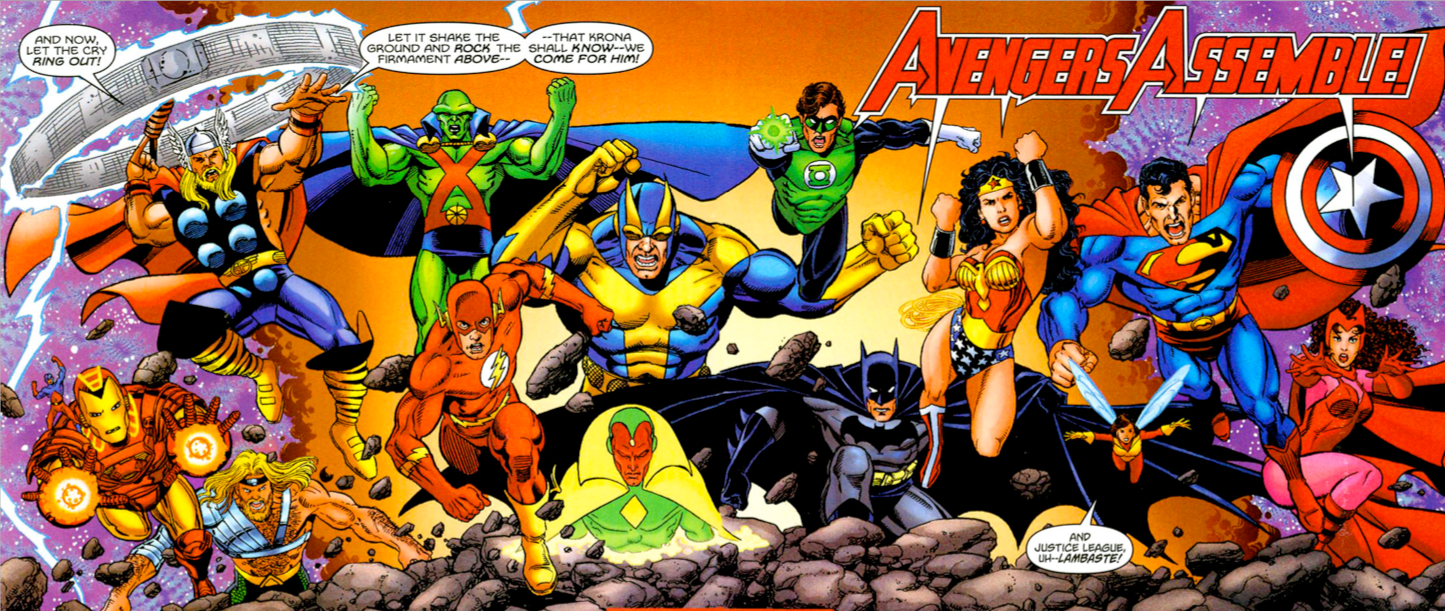
And now, the official crossover. While not the first of it kind between the two companies (that honor belongs to Superman vs. Spider-Man in 1976), it was certainly one of the longest in the making, and definitely the largest in scale. The crossover was approved way back in 1979, and work had begun by 1981, with George Perez having completed 21 pages by 1983, and scheduled to be published in May 1983.
However, editorial disputes led to the crossover falling through. It would sit on ice for nearly 20 years, until 2002 when the companies reached an agreement to finish the story, this time written by Kurt Busiek, then the writer of Avengers. While Mark Waid, then the writer of JLA, was supposed to co-write, other obligations forced him to leave all writing duties to Busiek. The series finally released in 2003, and as of 2018, remains the last crossover between the companies.

